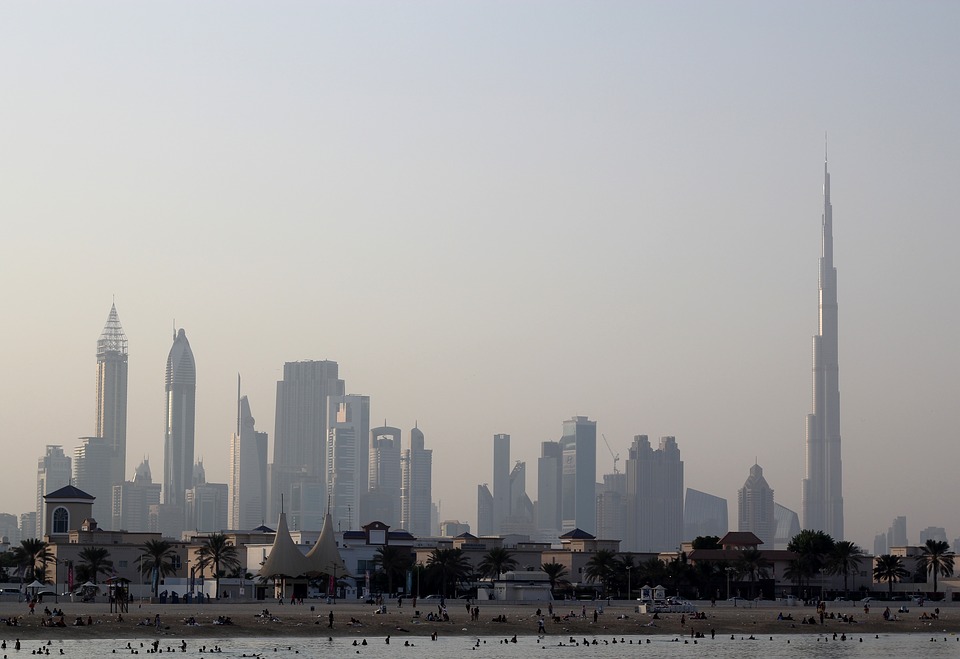Improving security conditions and the progress of economic reforms are also contributing to GDP growth after a 3-year drop in oil prices and tightening of fiscal constraints, which hindered growth across the region, according to a recently released Economic Insight Middle East report.
Regional economies are accelerating growth after a difficult 2017, when GDP growth fell to about 1%, the report said.
"Higher oil prices, which this year rose above $ 80 per barrel, which is the highest since November 2014 and a significant increase since late 2017, when oil prices averaged from $ 54 to $ 55 per barrel, are one of the main factors supporting regional growth," said Mohamed Bardastani, ICAEW economic adviser and senior economist for the Middle East at Oxford Economics.
The increase in public spending will lead to GDP growth, after involuntary tightening of belts to compensate for the reduction in revenues from hydrocarbons. According to him, public spending is expected to increase by an average of 5% in the Gulf countries in 2018. This will mainly happen in the form of export financing, support of small and medium-sized enterprises and housing.
It is expected that in the UAE GDP growth will accelerate to 2.6% in 2018 after a seven-year low of 1.5% in 2017.
The increase in government spending related to the restoration of the regional economy, the government's announcement of a stimulus package of $ 13 billion is one of the factors that will contribute to the growth of the UAE, the region's second largest economy, Bardastani said.
According to the report, the UAE market will continue to have some of the best indicators in the Middle East in 2018 even despite the introduction of a 5% VAT in January, thanks to which inflation will grow to 4% in 2018.
Lebanon and Iraq predict a record 2.5% GDP growth, Kuwait and Jordan - 2.4% respectively, Bahrain 2.3%, Saudi Arabia 1.8%.
According to forecasts this year, the fastest growth in Oman will be 3.6%, although in 2017 this figure was no more than 0.2%, and the country continues to struggle with one of the highest debt-to-GDP ratios in the countries of the Persian Gulf, after Bahrain, added Bardastani.
Forecasts for 2018 state that the average GDP growth in the GCC countries will reach 2.3%, compared with 0.1% in 2017.
The key risk for economic activity this year would be complacency about the rise in oil prices on the part of oil-exporting countries. This can force them to postpone much-needed reforms to diversify their economies. A sharp drop in oil prices, although unlikely because of OPEC's agreement to limit production, is another risk of GDP expansion, Bardastani said.
The growth of interest rates in the US and the increased trade tension between China and the US are more remote causes of potential risk, since they can affect the overall growth of global GDP.
source: reuters.com
Regional economies are accelerating growth after a difficult 2017, when GDP growth fell to about 1%, the report said.
"Higher oil prices, which this year rose above $ 80 per barrel, which is the highest since November 2014 and a significant increase since late 2017, when oil prices averaged from $ 54 to $ 55 per barrel, are one of the main factors supporting regional growth," said Mohamed Bardastani, ICAEW economic adviser and senior economist for the Middle East at Oxford Economics.
The increase in public spending will lead to GDP growth, after involuntary tightening of belts to compensate for the reduction in revenues from hydrocarbons. According to him, public spending is expected to increase by an average of 5% in the Gulf countries in 2018. This will mainly happen in the form of export financing, support of small and medium-sized enterprises and housing.
It is expected that in the UAE GDP growth will accelerate to 2.6% in 2018 after a seven-year low of 1.5% in 2017.
The increase in government spending related to the restoration of the regional economy, the government's announcement of a stimulus package of $ 13 billion is one of the factors that will contribute to the growth of the UAE, the region's second largest economy, Bardastani said.
According to the report, the UAE market will continue to have some of the best indicators in the Middle East in 2018 even despite the introduction of a 5% VAT in January, thanks to which inflation will grow to 4% in 2018.
Lebanon and Iraq predict a record 2.5% GDP growth, Kuwait and Jordan - 2.4% respectively, Bahrain 2.3%, Saudi Arabia 1.8%.
According to forecasts this year, the fastest growth in Oman will be 3.6%, although in 2017 this figure was no more than 0.2%, and the country continues to struggle with one of the highest debt-to-GDP ratios in the countries of the Persian Gulf, after Bahrain, added Bardastani.
Forecasts for 2018 state that the average GDP growth in the GCC countries will reach 2.3%, compared with 0.1% in 2017.
The key risk for economic activity this year would be complacency about the rise in oil prices on the part of oil-exporting countries. This can force them to postpone much-needed reforms to diversify their economies. A sharp drop in oil prices, although unlikely because of OPEC's agreement to limit production, is another risk of GDP expansion, Bardastani said.
The growth of interest rates in the US and the increased trade tension between China and the US are more remote causes of potential risk, since they can affect the overall growth of global GDP.
source: reuters.com





